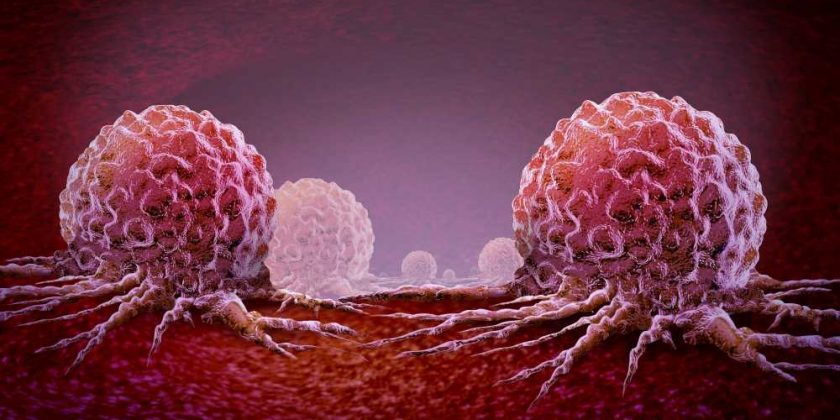Copy number profiling provides insight as to why prostate cancer may become lethal

In a recent study published in Nature Communications, researchers performed genome-wide copy number profiling of the androgen receptor (AR) on metastases from deceased prostate cancer patients.

Prostate cancer is highly responsive to androgen deprivation therapy; however, relapses commonly occur after an average of two years. Selection of clones with AR amplification, structural rearrangements, mutations, splice variants, or other events to maintain AR activity leads to a lethal state.
AR alterations in tissue biopsies are associated with shorter responses to hormonal treatments, and the heterogeneity across metastases may complicate their utility as a therapeutic target or biomarker.
The study and findings
In the present study, researchers characterized the genomic complexity of AR across lethal metastases. They performed autopsies on 10 patients who developed treatment resistance and died from metastatic castration-resistant prostate cancer (mCRPC).
Overall, 201 tumor samples were harvested. Additionally, the team obtained plasma from nine patients at death, as well as archival formalin-fixed paraffin-embedded (FFPE) tumor specimens from eight individuals.
FFPE samples were collected at diagnosis or after resistance was developed. First, shallow whole-genome sequencing was performed to estimate tumor fraction. Whole-genome sequencing was concurrently performed to maximize accuracy. This led to the exclusions, and consequently, 167 samples were used to obtain the AR copy number.
Seventy-four samples had AR gain, including one metastasis from eight subjects. Further, distinct metastasis groups with overlapping patterns of chromosome X copy number were observed, with inter- and intra-patient diversity. Next, up to six metastases from each patient were selected for re-sequencing at higher coverage depth, leading to the identification of unique breakpoints with high density in a large region (henceforth, AR locus) around AR.
Three patients with the shortest exposure to enzalutamide or abiraterone treatment showed the fewest breakpoints at this locus. Further, there was heterogeneity in intra-patient breakpoints within and between organs. Next, the team identified seven unique non-synonymous mutations within the coding regions of AR. Six occurred in one patient (CA36) and one in a different patient (CA43).
In CA36, one mutation (p.T878A) was detected in every metastasis. The team speculated that all metastases could have been seeded by the same clone with T878A, or the clones might have independently acquired it after metastasis.
They observed alleles with D891N or T878A, or both in one of the liver metastases. Additional analyses suggested that p.T878A occurred after metastatic seeding and emerged independently in a lineage with p.D891N.
The researchers also noted another independent event in a right dural metastasis. All metastases in CA36 had at least one functionally relevant AR mutation acquired via independent events; however, most patients (80%) lacked mutations of interest in any metastasis. This suggested that a subset of prostate cancers followed an evolutionary course converging on an AR-mutant-resistant genotype after hormone therapy.
The team explored copy number profiles and identified boundaries (transition points) where a copy number change of adjacent autosome segments occurred. Next, they examined the cooccurrence of transition points in FFPE biopsies with autopsy tumor samples.
They observed that transition points in (FFPE) samples from one patient were shared with all metastases from post-mortem samples from that individual, reaffirming a common clone of origin in lethal metastases.
Further, in autopsy tumor samples and plasma collected at death, most transition points (> 90%) identified in plasma were present in metastases. The researchers also noted that transition points in some patients were shared across distinct metastatic clusters. They developed a hierarchical clustering algorithm to define the relationship between spatially- and temporally-separated tumors.
Tumors were assigned to two or three clusters in all patients, indicating that each cluster had a unique dominant clone distinguishing them from others, representing evolutionary divergence.
The authors tested whether a cluster derived from autosomal transition points was more likely to have the same AR alterations. They observed that clusters defined by their autosome were associated with metastases in the same cluster defined by copy number profile.
In CA63, one biopsy from the bladder tumor was AR-amplified, while the other from the same bladder tumor was not. Clustering (based on autosomal copy number transition points) assigned them to separate clusters. Similarly, in patient PEA172, two anatomically adjacent bowel metastases with distinct AR architecture clustered separately based on their autosome with other metastases.
Conclusions
In summary, the researchers performed extensive copy number profiling on primary tumor samples and metastases from 10 patients who died from prostate cancer. They identified a few dominant clones at death characterized by unique AR architectures.
They also used autosomal copy number transition points to analyze the relationships of metastases and observed a common clone of origin in archival samples and lethal metastases. Overall, the findings offer insights into the genomic evolution of prostate cancer to a treatment-resistant lethal phenotype.
- Hasan AMM, Cremaschi P, Wetterskog D, et al. (2023). Copy number architectures define treatment-mediated selection of lethal prostate cancer clones. Nat Commun. 2023;14(1):4823. doi: 10.1038/s41467-023-40315-9. https://www.nature.com/articles/s41467-023-40315-9
Posted in: Medical Science News | Medical Research News | Disease/Infection News
Tags: Androgen, Androgen Deprivation Therapy, Autosomal, Autosome, Biomarker, Biopsy, Bladder, Cancer, Chromosome, Chromosome X, Evolution, Genome, Genomic, Hormone, Liver, Locus, Metastasis, Mutation, Phenotype, Prostate, Prostate Cancer, Receptor, Tumor

Written by
Tarun Sai Lomte
Tarun is a writer based in Hyderabad, India. He has a Master’s degree in Biotechnology from the University of Hyderabad and is enthusiastic about scientific research. He enjoys reading research papers and literature reviews and is passionate about writing.